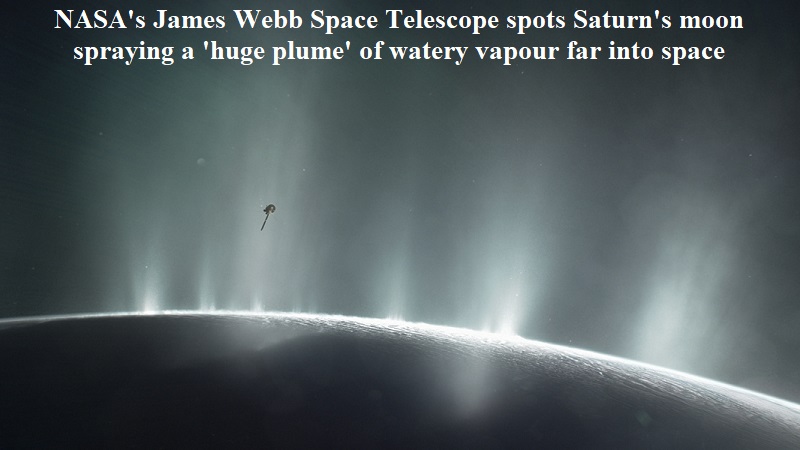
Space continues to captivate us with its astonishing discoveries, and one recent breakthrough involves Saturn’s moon Enceladus. NASA’s James Webb Space Telescope (JWST) has observed the moon emitting a massive plume of watery vapor into space, which scientists believe could contain the essential chemical components for life.
The eruption was detected by the JWST in November 2022 and was presented at a conference at the Space Telescope Science Institute in Baltimore on May 17. According to planetary astronomer Sara Faggi from NASA’s Goddard Space Flight Center, the plume is of immense proportions. A comprehensive research paper on this remarkable event is currently awaiting publication.
Interestingly, this is not the first time scientists have observed Enceladus spouting water into space. However, the JWST’s advanced capabilities have deepened our amazement. It has revealed that the vapor jets extend much farther into space than previously thought, surpassing the moon’s own size by multiple times. Enceladus has a diameter of approximately 313 miles (504 kilometers).
The initial discovery of Enceladus’ watery eruptions dates back to 2005 when NASA’s Cassini spacecraft observed icy particles being expelled through large cracks on the moon’s surface called “tiger stripes.” These eruptions are so forceful that the ejected material contributes to the formation of one of Saturn’s rings.
The significance of water being expelled into space lies in the analysis of the jets. Methane, carbon dioxide, and ammonia have been detected within the plumes, which are organic molecules containing the necessary building blocks for life. In fact, a study published last year in The Planetary Science Journal proposed that some of these gases may be produced by life itself, originating from the depths of Enceladus.
Furthermore, the presence of water on Enceladus enhances the possibility of life. Beneath its icy surface, measurements of its rotation suggest the existence of a vast hidden ocean. Scientists believe that the water jets observed by the JWST and Cassini originate from hydrothermal vents on the ocean floor, a hypothesis supported by the presence of silica in the vapor plumes—a common component of planetary crusts.
To confirm the existence of alien life and delve deeper into these discoveries, NASA scientists are contemplating future missions to Enceladus. One proposed mission, the Enceladus Orbilander, would orbit the moon for approximately six months, traversing its watery plumes and collecting samples. The spacecraft would then transform into a lander, equipped with instruments to analyze molecules, weigh samples, and even include a DNA sequencer and microscope. Additionally, remote exploration of the moon’s surface would be conducted using cameras, radio sounders, and lasers.
Another mission concept involves deploying an autonomous “snake robot” known as the Exobiology Extant Life Surveyor into the submerged depths of Enceladus. This robot, equipped with cameras and lidar, would navigate the unfamiliar environment of Enceladus’ ocean floor in search of signs of life.

Post Your Comments